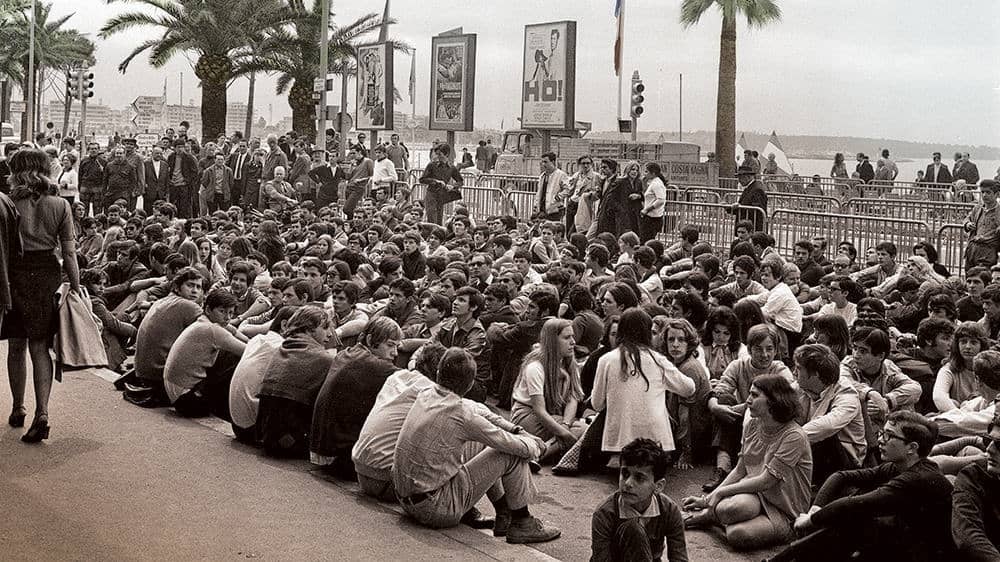Politics, general disorder, and run-ins with the law are common constituents of most people’s experience of university. We all knew someone with a pop-art poster of Che Guevara in all his beardy and be-bereted glory, or who dabbled in intoxication, perhaps because of their joy at manumission from those rotten tyrants, parents. Parties, loud music, and public inebriation may have landed you or your friends in trouble with the locals or the police. Sure, you’re there to learn, but some level of disorder and political experimentation is all part of growing up for many in their late teens.
But, sometimes, things get terribly out of control. For every score of aesthetically- or vocally-political students there is one who actually believes passionately in their chosen cause, and will make a stand with others for their beliefs. Sometimes, such demonstrations spill over into violent confrontations with the authorities, especially in dictatorial nations with an innate fear of the threat posed by highly-educated young people. Many people in the flush of youth, with promising futures, have been killed by brutal regimes or police forces over the centuries. We will look at some of their tragic stories in this list.
But student riots do not always need a political cause to happen. Sometimes, all that is required is the ever-reliable mixture of alcohol and a crowd to cause bloodshed and chaos. Not every item on this list ends in tragedy, either. Two in particular involve college sports matches, and it seems it is possible to get so angry that you start fires and randomly damage property even when your team wins! So, if you thought your university days were wild, prepare to think again after reading these wild and sometimes tragic tales of political protest, mass-inebriation, and sporting fortune.

University of Paris Strike, 1229
The University of Paris is one of the oldest universities in the world, founded as long ago as 1150. It took less than a century for it to experience its first riot, and thus it pioneered not only higher education but the tradition of student protest. The establishment taught theology and, as was typical of medieval universities, was run by the Church. Thus students were technically part of this large and powerful body and wore clerical robes to signify that they were under its protection (hence the word ‘clerk’ in medieval contexts meaning both a trainee priest and a student).
The riot began on Shrove Tuesday, 1229. The city of Paris was celebrating its pre-Lenten carnival, a raucous affair that provided a last hurrah before the fasting and solemnity that would prevail until Easter (rather like Mardi Gras today). Townsfolk and students (or ‘town and gown’) alike were having a wonderful time, but away from such seasonal diversions there was no love lost between the two groups. The Paris students were chiefly aristocratic and often foreign, and behaved as mischievously as young people do today, albeit with the protection of the Church, which made them very unpopular with locals.
In the suburban area of Saint Marcel, drunken students entered a tavern, got in a brawl over an unpaid bill, and were beaten up and ejected. Furious at this show of insubordination from the commoners, they returned the following day in great numbers armed with clubs, beating the owner and trashing the offending establishment and surrounding shops. Locals complained to the Church, but its caution and unwillingness to act led Blanche of Castile, King Louis IX’s regent, demanded retribution. The university reluctantly agreed, but the town guards were unexpectedly heavy-handed, and killed several, possibly innocent, students they happened to spot.
Thus the Strike began. Students and masters were furious about the city’s actions and abuse of the benefit of clergy, and when their demands were not met, began to leave the city for rival institutions such as Toulouse. This had a severe economic impact on the city, and by November 1229 Pope Gregory IX, an alumnus, had to intervene. He demanded that Blanche and King Louis IX make amends by enforcing the independent privileges of the Statute of Liberties given to the university by King Philip Augustus in 1200. But despite papal intervention, the strike actually lasted another 2 years.
In 1231, Gregory had had enough, and passed a Papal Bull known as Parens scientiarum (‘mother of all sciences’) which guaranteed the university’s direct papal protection, immunity to local authority, and right to strike. Papal Bulls were not to be quibbled with, and the city was feeling the strain after the masters and students left. Thus this piece of legislation secured the University of Paris great authority, setting the tone for the power and influence that medieval universities enjoyed throughout the period. And to think, it all started with a few drunken louts refusing to pay their bill.

